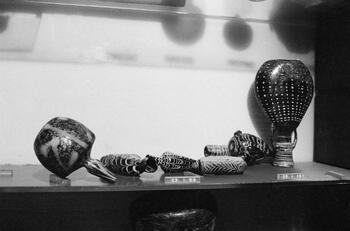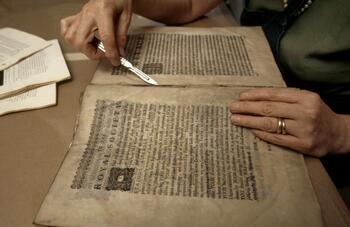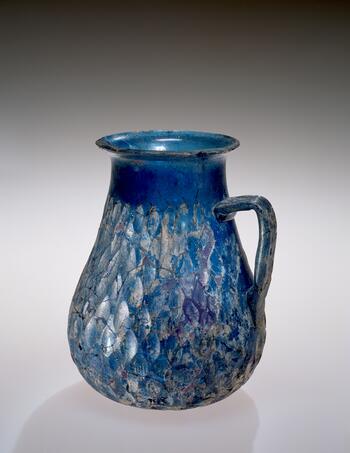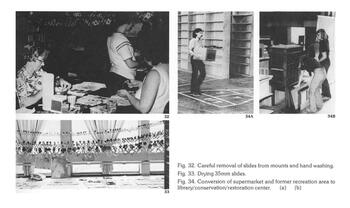Corning Glass Works, now Corning Incorporated, became the single greatest benefactor to rebuilding Corning after the disaster. Just days after the flood, Amory Houghton, Jr, the chairman of the Glass Works, announced that despite suffering $20 million in damage ($138.3 million in 2022), the Glass Works would not only stay in Corning and help rebuild the city, but would offer interest free loans to current and retired Glass Works employees to help them rebuild their homes. This had an unparalleled impact on the local recovery effort.
Experts from around the world assisted staff and volunteers, sometimes developing and implementing wholly new conservation and restoration techniques. While cleaning and restoring all the damaged material, particularly the books, would take four years to finish, the museum itself boldly reopened in just 6 weeks, on August 1, 1972.
Islamic Glassware. Courtesy of the Rakow Research Library at the Corning Museum of Glass.
This priceless glassware was damaged when its display case tipped over. One of the many actions taken to prevent a disaster like this from ever occurring again was to secure all the museum’s display cases to the floor.
Dis-binding flood damaged book. Courtesy of the Rakow Research Library at the Corning Museum of Glass.
Even more severely affected were the rare books and manuscripts in the museum’s library. Over 600 rare books fell from their shelves during the flood. The pages and binding absorbed the floodwater, so that some bound books exploded from their bindings, while others ended up lodged within the shelves.
Many of the books had to have their bindings removed and the pages dried individually, as seen here by conservator Carolyn Horton.
Horton had recently spent time in Florence, Italy, after their 1966 flood, and had learned new techniques there. One of those techniques was to freeze the books soon after the flood in order to prevent the irreversible and highly damaging growth of mold.
The Rakow Library used this freezing technique on much of their book collection in 1972, which enabled them to work through and carefully restore the collection for years to come.
Rack drying. Courtesy of the Rakow Research Library at the Corning Museum of Glass.
Many books were restored locally using well-established but time-intensive processes like nylon string drying racks.
Most of periodical, slide, and photo collections were a complete loss.
Ewer, Roman Empire, late first-early second century AD. Courtesy of the Corning Museum of Glass.
This was one of many glass pieces from the Museum's collection that had to be painstakingly reconstructed in the years following the flood. It had broken into over 120 pieces after its display case had fallen over.
Page 25 of Museum under Water. Courtesy of the Corning Museum of Glass.
In 1977, the museum published Museum Under Water, a detailed look at the damage and restoration following the flood. Techniques and results were carefully documented, providing cultural heritage organizations around the world with invaluable insight for disaster preparedness and recovery for decades to come.




